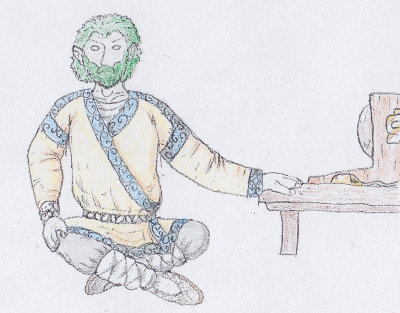Jolþi
Jolþic: Jolþna /jɔːlθnaː/
High-Æjalan: Jolðhnjar /jɔːlðn̥jaːr/
Low-Æjalan: Jolðnjar /jɔːlðɲaːr/
Ælic: Njolþeið /ɲɔːlθeiːð/
Þamtic: Jolðjó /jɔːlðjouː/ Erenic: Jolþóz /jɔːlθouːz/
The jolþi1 are Þjaric Elves inhabiting the country of Jolþ in southern Þjaris in northwestern Jælondis, between the rivers Mænas and Njapaða to the south and north, from the Niþvú Sea to the west, to the Qug Mountains and Lælf to the east.
Jolþi are the largest ethnic group in Þjaris, owing to relatively mild climate which makes cultivating millet, acorns and various vegetables possible on a large scale, and are made up of four groups, namely þlarans to the west, kælilþans to the midwest, þvosans to the mideast and haðúlans to the east. While all share a similar culture and language, there are notable differences in terms of cuisine, clothing and religious practices as well.
As elsewhere in Þjaris and among certain Jútrilían Elves, each clan is associated with a sacred plant or animal; in Haðúlún it's the wolf, the swan in Kælilþ, Þlar has the swallow and in Þvos it's the spruce.
Jolþi clothing is overall lighter and baggier than among Æjalans and Æleans, and aside from those worn by þlarans feature simpler designs.
The most common drinks are tea, especially spruce tea, broth and thin porridge. While alcohol made from millet or berries is brewed by the jolþi, its consumption is mostly associated with rituals and other special occasions.
Low-Æjalan: Jolðnjar /jɔːlðɲaːr/
Ælic: Njolþeið /ɲɔːlθeiːð/
Þamtic: Jolðjó /jɔːlðjouː/ Erenic: Jolþóz /jɔːlθouːz/
The jolþi1 are Þjaric Elves inhabiting the country of Jolþ in southern Þjaris in northwestern Jælondis, between the rivers Mænas and Njapaða to the south and north, from the Niþvú Sea to the west, to the Qug Mountains and Lælf to the east.
Jolþi are the largest ethnic group in Þjaris, owing to relatively mild climate which makes cultivating millet, acorns and various vegetables possible on a large scale, and are made up of four groups, namely þlarans to the west, kælilþans to the midwest, þvosans to the mideast and haðúlans to the east. While all share a similar culture and language, there are notable differences in terms of cuisine, clothing and religious practices as well.
Society
Jolþ started out as and is still referred to by its people as a league of four countries -Haðúlún, Kælilþ, Þlar and Þvos-, though in practice Kælilþ is the dominant one and its rulers (tíhlan) are effectively monarchs. Each country has its own ruling dynasty and clan leader (silran) who form the upper class, with some members acting as priests and priestesses during important festivals.As elsewhere in Þjaris and among certain Jútrilían Elves, each clan is associated with a sacred plant or animal; in Haðúlún it's the wolf, the swan in Kælilþ, Þlar has the swallow and in Þvos it's the spruce.
Culture
Apparel
Like other þjaric elves, jolþi traditionally wear clothing made from Muskox Wool, consisting of a belted, long-sleeved jacket of sorts for men and women alike along with a long tunic underneath for the latter. Footwear is optional during summer, particularly to the west, though birch-bark shoes are not uncommon among the haðúlúns, while reindeer skin shoes are worn during winter, along with trousers for men.Jolþi clothing is overall lighter and baggier than among Æjalans and Æleans, and aside from those worn by þlarans feature simpler designs.
Cuisine
Millet, of which several kinds are grown by the jolþi, features much more heavily in their diet than other þjaric elves in the form of porridge rather than bread. Other important produce includes beans, lily bulbs and acorns, fish, eggs and reindeer- or taiga grouse meat, all variously flavoured with spruce buds- and needles, berries and different animal fats during festivals.The most common drinks are tea, especially spruce tea, broth and thin porridge. While alcohol made from millet or berries is brewed by the jolþi, its consumption is mostly associated with rituals and other special occasions.
Religion
Most religious practices among the jolþi emphasize dendrolatry and Pyrolatry, with spruce worship being particularly important in Þvos while others are centered on oaks and walnut trees. Arctolatry, he third major branch of traditional elven beliefs, has limited following except in Haðúlún, where more pious arctolaters can roam the wilderness at the eastern border at will without worrying about running into (and potentially harming) people.1Original icelandic: Jolþar, singular: Jolþi.
Parent ethnicities
Related Organizations






Comments